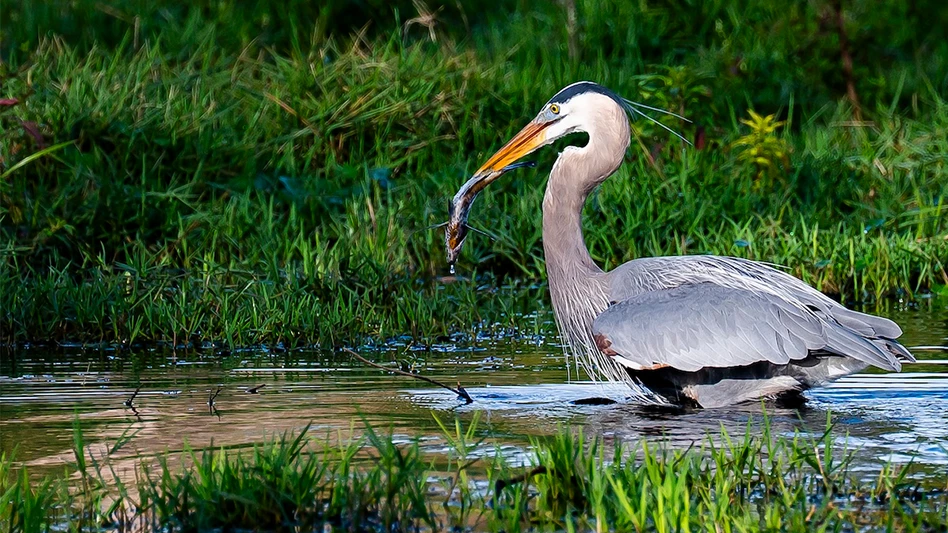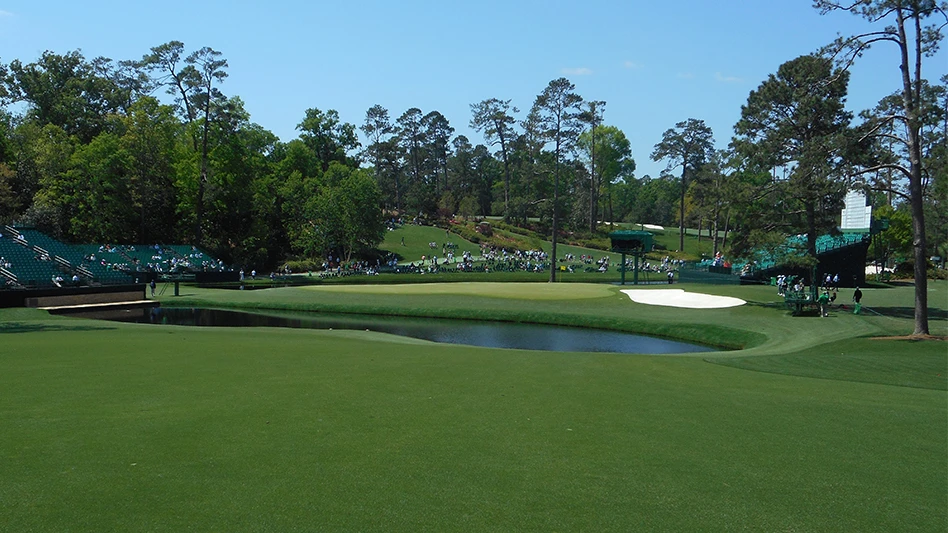

I’m staring forward on a crisp, Canadian afternoon in early June. I see the corner of a healthy pond protected by a wetland buffer, a pair of tee boxes, multiple tree varieties, a bunker shaped like a reverse tripod and stripes of Poa annua/bentgrass turf.
The sky is blue; the late Sunday afternoon game with strangers from another country is on. The setting makes a Sunday away from family and friends worthwhile.
I’m also staring at a rhino. I’m standing on the first tee of Glen Abbey Golf Club in Oakville, Ontario. Oakville is one of Toronto’s southern suburbs. Toronto is the fastest growing metropolitan area in North America.
Yes, like animals and plants, golf courses can become endangered species. Glen Abbey is one of them. ClubLink, the largest owner and operator of golf clubs in links-loving Canada, wants to redevelop the site. A company known for operating golf facilities believes residential and commercial buildings are a better use of the Ontario land than a golf course.
Glen Abbey isn’t a normal golf club. The course has hosted the Canadian Open a record 30 times since opening in 1976, including the 2018 event won by limber golf heavyweight Dustin Johnson. Nearly every big-name player in the last four decades has played a competitive round at Glen Abbey. Jack Nicklaus, who parlayed playing excellence into abundant golf course architecture work, considers Glen Abbey his first solo design. Nicklaus, coincidentally, never won a Canadian Open.
Thousands of Canadians and visitors play Glen Abbey each year. The course allows public play, thus my decision to book a Sunday afternoon tee time while driving to Ontario for a project commencing on a Monday morning. I’m paired with a junior who smacks 300-yard drives and two millennials experiencing a tournament-caliber course for the first time.
We’re overjoyed to be standing on the first tee. We’re unsure if others will be standing on the same tee one, two, five or 10 years from now. My playing partners, who live in the Greater Toronto Area, assure me their family members, friends and neighborhoods want Glen Abbey to remain a golf course.
The legal fight to save Glen Abbey will likely be long and expensive. Officials from the Town of Oakville oppose the development plan. A group called Save Glen Abbey – slogan: “Putters Not Pavement” – formed to protect the golf course. The pro-course crowd touts the site’s role as a greenspace and its historical significance, although calling Glen Abbey “Canada’s most famous golf course” is excessively subjective. Stanley Thompson, after all, executed the bulk of his work in the country.
Glen Abbey represents a high-profile example of the tussle involving golf and development throughout North America. Housing near mega-cities has become scarcer and more expensive. There are billions of financial reasons behind replacing Poa annua with pavement. Even if Glen Abbey, the current home of Canadian golf, avoids extinction, other courses face perilous futures. Redevelopment can happen anywhere, including the places we admire on television. Golf’s environmental, social and fitness charms can become negated when dollar amounts and earning potential are attached to vast acreage. Golf will win some tussles. But redevelopment will continue to throw haymakers at venerable clubs.
Perhaps that’s why I feel obligated to experience Glen Abbey. The first 10 holes sit on a relatively flat slice of suburban land bordered by modern homes and suburban roads. The course takes a dramatic turn on the 11th, a par-4 with an elevated tee shot featuring a 150-foot drop and views of distant high rises. Sixteen Mile Creek bisects the hole, creating strategic decisions on drives and approach shots. I stub a wedge into the creek as kayakers paddle past the course. I laugh, wave and snap a half-dozen pictures of the green.
Four other holes border the creek, yet my round ends on the par-3 12th. With a meeting approaching, the Sunday sun dropping and eight golfers occupying every back-nine hole, I quickly tour the closing stretch.
The crowd and conditions provided by superintendent Andrew Gyba’s team despite a cold, wet April, May and early June suggest a vibrant golf course bracing for decades of special Sundays. Neither the scenery along the creek nor the uncertain future seem real.
I’m staring. I’m inspired by the suburban serenity. I’m concerned about the future of golf courses everywhere. A pleasant place somehow yields precarity.
Tartan Talks No. 36

What’s life like as American Society of Golf Course Architects President?
“It’s busy!” Jan Bel Jan says. “It’s busy!”
Juggling her business, Jan Bel Jan Golf Course Design, with her presidential duties shouldn’t fluster Bel Jan. The daughter of a superintendent/pro, Bel Jan started improving golf courses as a child, working a variety of maintenance and pro shop jobs to assist her father. “It was a job,” she says, “and it was my life.”

A hectic life experienced a significant change when Bel Jan moved from her native Western Pennsylvania to South Florida to work for Tom Fazio. A registered landscape architect, Bel Jan quickly learned new plant palettes, helping enhance the aesthetics of dozens of courses designed by Fazio and his talented team.
Bel Jan, who formed her own design firm in 2009, discusses the role of plants on a golf course and numerous other topics, including implementing “scoring” tees and her work with the National Alliance for Accessible Golf, in the podcast, which can be accessed by entering bit.ly/JanBelJan into your browser.

Explore the July 2019 Issue
Check out more from this issue and find your next story to read.
Latest from Golf Course Industry
- Applications open for 2025 Syngenta Business Institute
- Smart Greens Episode 1: Welcome to the digital agronomy era
- PBI-Gordon promotes Jeff Marvin
- USGA investing $1 million into Western Pennsylvania public golf
- KemperSports taps new strategy EVP
- Audubon International marks Earth Day in growth mode
- Editor’s notebook: Do your part
- Greens with Envy 66: A Southern spring road trip





